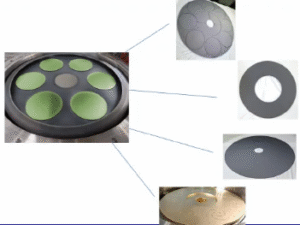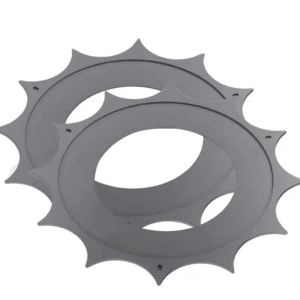
エネルギー用途に関しては、卓越した性能を発揮する材料が必要です. GDLカーボン紙 独自の特性で際立っています。 厳しい環境での長期的信頼性を確保し、比類のない耐久性を提供します。 その高い導電性は、効率的なエネルギー転送に最適です。 コスト効率性も高く、品質を損なうことなくコストを削減できます。 さらに、スケーラビリティにより、さまざまなアプリケーションに簡単に適応できます。 これらの資質は作ります GDLカーボン紙 パフォーマンスと効率性でエッジを発揮する、エネルギーソリューションでゲームチェンジャー.
要点
- GDLのカーボン ペーパーは要求するエネルギー塗布の長期信頼性を保障する例外的な耐久性を提供します.
- その高い電子伝導性はエネルギー伝達の効率を高めます、燃料電池および電解槽にとって理想的にします.
- GDLのカーボン紙を選ぶことは高い性能を渡す間生産および維持のコストを削減するので費用効果が大きいです.
- 素材の機械的安定性は、一貫した結果を保証する、圧力の下で形状と性能を維持することができます.
- GDLカーボンペーパーはスケーラブルで、小型のプロトタイプと大型の産業用途に適しています.
- 環境に配慮した生産プロセスは、廃棄物を少なくし、持続可能なエネルギーソリューションに貢献します.
- GDLのカーボン紙を選ぶことによって、あなたのエネルギー プロジェクトのための信頼できる、有効および環境に優しい材料に投資します.
GDLカーボン紙のユニークな特性
耐久性と寿命
エネルギー用途の材料を選択すると、耐久性の問題。 GDLカーボン紙は、過酷な条件に時間をかけて耐えることができる、優れた強度を提供します。 その堅い構造は摩耗に抵抗し、要求する環境の一貫した性能を保障します。 すぐに劣化する他の材料とは異なり、この紙は、その完全性を維持し、頻繁な交換からあなたを節約します。 長期使用に頼りになれば、エネルギーニーズに左右される選択肢になります.
エネルギー適用のための高い伝導性
現代のエネルギーシステムでは、効率的なエネルギー転送が不可欠です。 GDLのカーボン紙は高い電子伝導性とこの区域でexcelsます。 燃料電池や電解槽などの装置の性能を高める、スムーズで効果的なエネルギーの流れを保証します。 表面に水を保持する材料の能力は、操作中に導電性を高めます。 このユニークなプロパティは、エネルギー効率が最優先であるアプリケーションに最適なソリューションです。 この紙では、より良い結果と改善されたシステム信頼性を得ることができます.
生産および使用のコスト効果
大規模な用途向けの材料を選択する際に、コストは大きな役割を果たします。 GDLカーボンペーパーは費用効果が大きい選択として際立っています。 その製造プロセスは、焼結チタンなどの代替品と比較してシンプルでより手頃な価格です。 これは、銀行を壊さずに高機能材料を得ることを意味します。 また、その耐久性はメンテナンスや交換コストを削減します。 この紙を選ぶことによって、あなたはお金を前方に保存するだけでなく、長期的に運営費を下げる恩恵を受けることができます.
機械的安定性と構造的利点
エネルギー用途に関しては、機械的安定性が重要な要因となります。 GDLカーボンペーパーは他の材料からそれを置く顕著な構造上の利点を提供します。 堅く、まっすぐな繊維は変形なしで高圧環境を扱う強さを与える堅牢なフレームワークを作成します。 困難な条件下でも、その形状と性能を維持するためにカウントすることができます.
GDLのカーボン ペーパーのより少ない多孔質構造は安定性を更に高めます。 この設計は材料の故障の危険を最小にし、時間の上の一貫した機能性を保障します。 カーボン布のようなより適用範囲が広い材料とは違って、このペーパーは曲げるか、または歪むことを抵抗しま、それは精密で、安定した構成を要求する適用にとって理想的にします.
また、GDLカーボン紙の均一な厚さが構造の整合性にどのように貢献するかも感謝します。 この一貫性は、障害につながる可能性がある弱点を減らす、力の分布さえ確保します。 燃料電池、電解液、その他のエネルギーシステムと連携している場合でも、最適な性能に必要な信頼性を提供します.
また、GDLカーボン紙の機械的安定性は、設置とメンテナンスを簡素化します。 丈夫な性質により、組み立て時の扱いや位置が容易になります。 あなたは、そのフォームを涙または失うことを心配する必要はありません, 長い実行で時間と労力を節約. 耐久性と精度を要求するエネルギーソリューションのために、GDLカーボンペーパーは信頼できる選択であることを証明します.
GDLについて カーボン紙対代替材料
焼結チタンとの比較
GDLカーボン紙を焼結させたチタンと比較すると、違いがクリアになります。 焼結チタンは、優れた強度と耐食性を提供しますが、それは頑丈な価格タグが付属しています。 生産工程は複雑で高価で、大規模用途では実用化が少ない。 一方、GDLカーボン紙は、性能を犠牲にすることなく費用対効果の高いソリューションを提供します。 高い導電性と耐久性を発揮しながらコストを抑えるシンプルな製造工程です.
また、GDLカーボン紙は焼結チタンよりもはるかに軽量であることに気づくでしょう。 ポータブルエネルギーデバイスなど、重量を削減するアプリケーションに最適です。 また、GDLカーボン紙は、チタンのような酸性環境でよく実行しますが、コストのほんの一部で。 性能と手頃な価格のバランスの取れる素材を探しているなら、GDLカーボンペーパーはよりスマートな選択です.
カーボン布との比較
カーボンクロスは、エネルギー用途で使用される別の一般的な材料ですが、GDLカーボン紙と比較して、いくつかの領域で不足しています。 カーボン布は、特定のセットアップで有用であることができるより柔軟ですが、この柔軟性は、機械的安定性の費用でしばしば来ます。 硬質構造のGDLのカーボン紙は、優秀な安定性を提供し、圧力の下の形を維持します。 これにより、精密な構成を必要とするシステムに適したオプションが可能になります.
GDLのカーボン ペーパーのより少ない多孔質構造はまたそれに端を与えます。 カーボンクロスは高い気孔率を持つ傾向がありますが、それは不均等な性能につながることができます、GDLカーボンペーパーは一貫した機能性を保障します。 均一な厚さおよびまっすぐな繊維はよりよいエネルギー転送および信頼性に貢献します。 一貫した結果をもたらし、取付けの間に扱うこと容易な材料がほしいと思えば、GDLカーボン紙はカーボン布を毎回処理します.
ポリマー系材料との比較
ポリマー系材料は、コストと柔軟性が低いため、魅力的に見えるかもしれませんが、高性能エネルギーシステムに必要な耐久性と導電性が欠けています。 GDLカーボン紙、対照的に、両方の領域で優れています。 高導電性により、ポリマー系材料が合わない効率的なエネルギー伝達を実現します。 これは、GDLカーボン紙は、燃料電池や電解槽などのアプリケーションにはるかに優れた選択肢になります.
耐久性は、GDLカーボン紙が輝く別の領域です。 ポリマー系材料は過酷な条件下で急速に劣化し、頻繁な交換とメンテナンスコストが高い。 GDLのカーボン ペーパーは摩耗に抵抗し、要求する環境で、長い操業の時間そしてお金を節約します。 信頼性と長持ちするソリューションを目指している場合、GDLカーボンペーパーはポリマーベースの代替品よりもヘッドとショルダーをスタンドします.
エネルギー用途に適した材料を選択すると、すべての違いを生むことができます。 GDLカーボン紙は、コスト、耐久性、導電性などの重要な分野において、チタン、カーボンクロス、ポリマー系材料を一貫して焼結させました。 優れた成果を出すために信頼できる素材です.
GDLカーボン紙の製造とスケーラビリティの利点
効率的なコスト効果の高い生産プロセス
運代を要さないでうまくいく素材が欲しい。 GDLカーボン紙は、効率的な製造プロセスでこの正面に届けます。 焼結チタンなどの材料とは異なり、複雑で高価な生産方法を必要とするGDLカーボン紙は、よりシンプルな技術で作られています。 これらの合理化されたプロセスは、生産コストを削減するだけでなく、一貫した品質を保証します.
GDLカーボンペーパーの均一厚さそして構造は精密な製造業制御から来ます。 この一貫性は、欠陥やバリエーションを心配することなく、いつでも信頼できる製品を得ることができます。 この材料を選ぶことで、予算を負担しない高性能なソリューションが恩恵を受けることができます.
多様なアプリケーションのためのスケーラビリティ
大規模なプロジェクトをスケールアップすると、GDLカーボン紙が輝きます。 生産プロセスはさまざまな企業の要求を満たすために容易に合わせます。 燃料電池、電解液、その他のエネルギーシステムに取り組んでいる場合でも、この材料は、お客様のニーズに合わせて効率的にスケールアップします.
GDLカーボンペーパーは、小規模な試作とフルスケールの産業用途でうまく機能するのがわかります。 その汎用性により、パフォーマンスを損なうことなく、さまざまなプロジェクトで使用できます。 この適応性は、品質と効率性を維持しながら、事業を拡大したいと考えています.
GDLのカーボン紙の生産の環境の利点
GDLカーボン紙は、これまで以上にサステナビリティが重要になってきています。 焼結したチタンやポリマー系材料などの代替品に比べて廃棄物が少なくなります。 つまり、資源の消費が少なく、環境への影響が最小限に抑えられます.
また、GDLカーボン紙の耐久性は頻繁な交換の必要性を減らします。 長持ちすることで、材料廃棄物を時間をかけて削減できます。 あなたのプロジェクトだけでなく、より緑豊かな未来に貢献し、この材料を選ぶ.
GDLカーボン紙では、費用対効果の高い、スケーラブル、環境的に責任を負う材料を得ることができます。 それは現代エネルギー解決のためのスマートな選択です.
GDLカーボンペーパーはエネルギー塗布でexcels材料を与えます。 高い伝導性および機械安定性のようなその独特な特性は、信頼できる性能を保障します。 その耐久性と長寿命の恩恵を受けながら、費用効果の高いお金を節約します。 小規模なプロトタイプから工業システムまで、あらゆる規模のプロジェクトに適しています。 この材料を選ぶことで、持続可能なエネルギーの進歩をサポートするソリューションに投資しています。 素材だけでなく、より効率的で環境に優しい未来への一歩です.
よくあるご質問
GDLカーボン紙はどのような用途で使われていますか?
GDLカーボンペーパーは燃料電池および電解槽のようなエネルギー システムの主要な役割を担います。 ガス拡散層として機能し、効率的なエネルギー転送とガスの適切な分布を保証します。 また、導電性や耐久性が不可欠である他の電気化学的用途でも有用です.
GDLカーボンペーパーはカーボン布と比較しますか?
GDLカーボンペーパーはカーボン布よりよりよい機械安定性および構造完全性を提供します。 その堅い繊維およびより少ない多孔質構造は精密な構成のためにそれをより信頼できるようにします。 カーボンクロスは柔軟性がありますが、GDLカーボンペーパーは設置の間に一貫した性能そしてより容易な処理を提供します.
GDLのカーボン紙は費用効果が大きいですか?
はい、GDLカーボン紙は非常に費用効果が大きいです。 製造工程をシンプルにし、製造コストを抑えます。 さらに、その耐久性は、頻繁な交換の必要性を減らし、メンテナンスと運用費用を時間をかけて節約します.
GDLのカーボン紙は粗い環境を扱いますか?
絶対に。 GDLのカーボン紙は要求する条件で例外的によく行います。 摩耗や破損に抵抗し、圧力下での安定性を維持し、酸性環境に耐える。 これは、困難なアプリケーションで長期的な使用のための信頼できる選択肢になります.
GDLカーボン紙で高い導電性が重要なのはなぜですか?
高導電性により、燃料電池や電解槽などの装置に重要な効率的なエネルギー伝達を実現します。 GDLカーボン紙は、その表面に水を保持する能力をさらに高め、動作中に導電性を高め、システム全体の性能と信頼性を向上させます.
GDLカーボンペーパーは、持続可能性にどのように貢献しますか?
GDLカーボン紙は、複数の方法で持続可能性をサポートします。 焼結したチタンの代替品に比べて廃棄物が少なくなります。 耐久性も長持ちすることで材料廃棄物を削減し、エネルギーソリューションのエコな選択を実現します.
GDLカーボン紙は大型用途に適していますか?
はい、GDLのカーボン紙はあらゆるサイズのプロジェクトのために効率的にスケールを量ります。 生産プロセスは、小型の試作とフルスケールの産業システムの両方の要求を満たすために容易に適応します。 多様なエネルギー用途に理想的な汎用性です.
GDLカーボン紙を耐久性にするものは何ですか?
GDLカーボン紙の剛性とストレートファイバーが強い枠組みを生み出します。 そのより少ない多孔質構造は安定性を高め、均一厚さは力の配分を保障します。 これらは、優れた耐久性と長期的信頼性を両立する機能を備えています.
GDLカーボンペーパーはエネルギー効率を改善する方法か?
GDLのカーボン紙の高い電子伝導性は移動の間に損失を減らす滑らかなエネルギーの流れを保障します。 さらなる導電性を向上し、燃料電池などのエネルギー効率の高いシステムに最適です.
GDLカーボンペーパーは焼結させたチタニウムを取り替えることができますか?
はい、GDLカーボンペーパーは多くの適用で焼結させたチタニウムを取り替えることができます。 導電性や耐久性の面では同様の性能を発揮しますが、コストを抑えています。 その軽量な性質とシンプルな生産プロセスにより、より実用的で手頃な価格の代替品になります.






